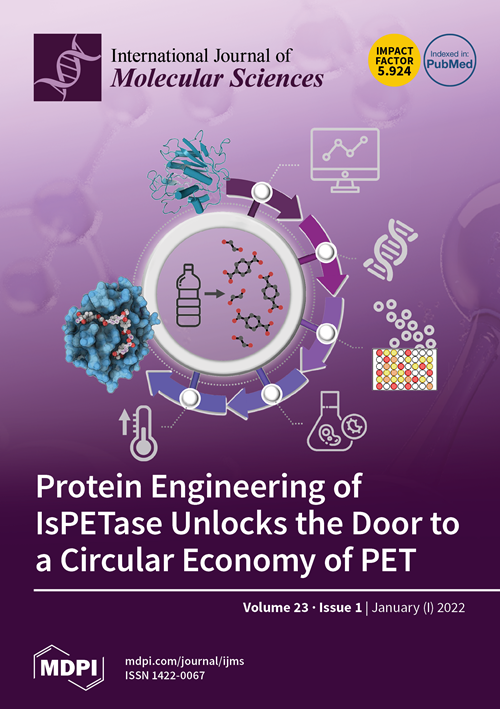用 AAV9-AIPL1 载体转导的经分化 ARPE-19 细胞的 RNA-Seq 分析
IF 4.9
2区 生物学
Q1 BIOCHEMISTRY & MOLECULAR BIOLOGY
引用次数: 0
摘要
自从基于腺相关病毒的疗法(voretigene neparvovec-rzyl)成功治疗 Leber 先天性无视力症 2 型(LCA2)以来,遗传性视网膜疾病(IRD)已成为基因疗法研究的主要焦点。利用腺相关病毒(AAV)将功能基因转入视网膜的类似方法有可能治疗数十种单基因IRD。在此,我们介绍了携带芳基烃受体相互作用蛋白-1(AIPL1)密码子优化(co)拷贝的 AAV 血清型 9(AAV9)载体的设计、生产和体外测试结果,该载体可用于治疗 LCA4。pAAV-AIPL1co 能够成功转导视网膜色素上皮细胞(ARPE-19)并启动人类 AIPL1 的表达。耐人寻味的是,与转导的 AAV9-AIPL1wt(野生型 AIPL1)相比,转导的 AAV9-AIPL1co 细胞表现出更少的抗病毒反应。用 AAV9-AIPL1co 转导的经分化的 ARPE-19 细胞的 RNA 序列(RNA-seq)分析表明,参与先天性免疫反应的基因表达存在显著差异。相比之下,AAV9-AIPL1wt 则诱导了多种干扰素刺激基因的显著活化。可能的调控分子机制的关键部分是激活dsRNA反应性抗病毒寡腺苷酸合成酶,以及显著增加RNA-seq数据中比例过高的组蛋白编码基因转录本(即H1、H2A、H2B、H3和H4)的水平。RNA-seq数据表明,与AAV9-AIPL1wt相比,AAV9-AIPL1co的免疫原性更低,可用于药效测试,利用相关动物模型开发LCA4的未来疗法。本文章由计算机程序翻译,如有差异,请以英文原文为准。
RNA-Seq Analysis of Trans-Differentiated ARPE-19 Cells Transduced by AAV9-AIPL1 Vectors
Inherited retinal disorders (IRD) have become a primary focus of gene therapy research since the success of adeno-associated virus-based therapeutics (voretigene neparvovec-rzyl) for Leber congenital amaurosis type 2 (LCA2). Dozens of monogenic IRDs could be potentially treated with a similar approach using an adeno-associated virus (AAV) to transfer a functional gene into the retina. Here, we present the results of the design, production, and in vitro testing of the AAV serotype 9 (AAV9) vector carrying the codon-optimized (co) copy of aryl hydrocarbon receptor-interacting protein like-1 (AIPL1) as a possible treatment for LCA4. The pAAV-AIPL1co was able to successfully transduce retinal pigment epithelium cells (ARPE-19) and initiate the expression of human AIPL1. Intriguingly, cells transduced with AAV9-AIPL1co showed much less antiviral response than AAV9-AIPL1wt (wild-type AIPL1) transduced. RNA-sequencing (RNA-seq) analysis of trans-differentiated ARPE-19 cells transduced with AAV9-AIPL1co demonstrated significant differences in the expression of genes involved in the innate immune response. In contrast, AAV9-AIPL1wt induced the prominent activation of multiple interferon-stimulated genes. The key part of the possible regulatory molecular mechanism is the activation of dsRNA-responsive antiviral oligoadenylate synthetases, and a significant increase in the level of histone coding genes’ transcripts overrepresented in RNA-seq data (i.e., H1, H2A, H2B, H3, and H4). The RNA-seq data suggests that AAV9-AIPL1co exhibiting less immunogenicity than AAV9-AIPL1wt can be used for potency testing, using relevant animal models to develop future therapeutics for LCA4.
求助全文
通过发布文献求助,成功后即可免费获取论文全文。
去求助
来源期刊

International Journal of Molecular Sciences
Chemistry-Organic Chemistry
CiteScore
8.10
自引率
10.70%
发文量
13472
审稿时长
17.49 days
期刊介绍:
The International Journal of Molecular Sciences (ISSN 1422-0067) provides an advanced forum for chemistry, molecular physics (chemical physics and physical chemistry) and molecular biology. It publishes research articles, reviews, communications and short notes. Our aim is to encourage scientists to publish their theoretical and experimental results in as much detail as possible. Therefore, there is no restriction on the length of the papers or the number of electronics supplementary files. For articles with computational results, the full experimental details must be provided so that the results can be reproduced. Electronic files regarding the full details of the calculation and experimental procedure, if unable to be published in a normal way, can be deposited as supplementary material (including animated pictures, videos, interactive Excel sheets, software executables and others).
 求助内容:
求助内容: 应助结果提醒方式:
应助结果提醒方式:


